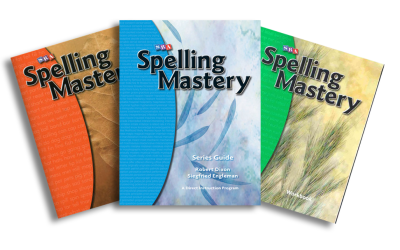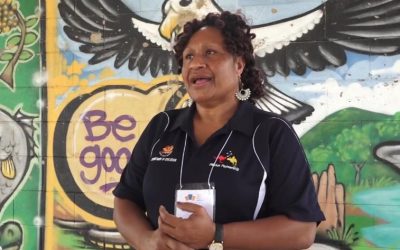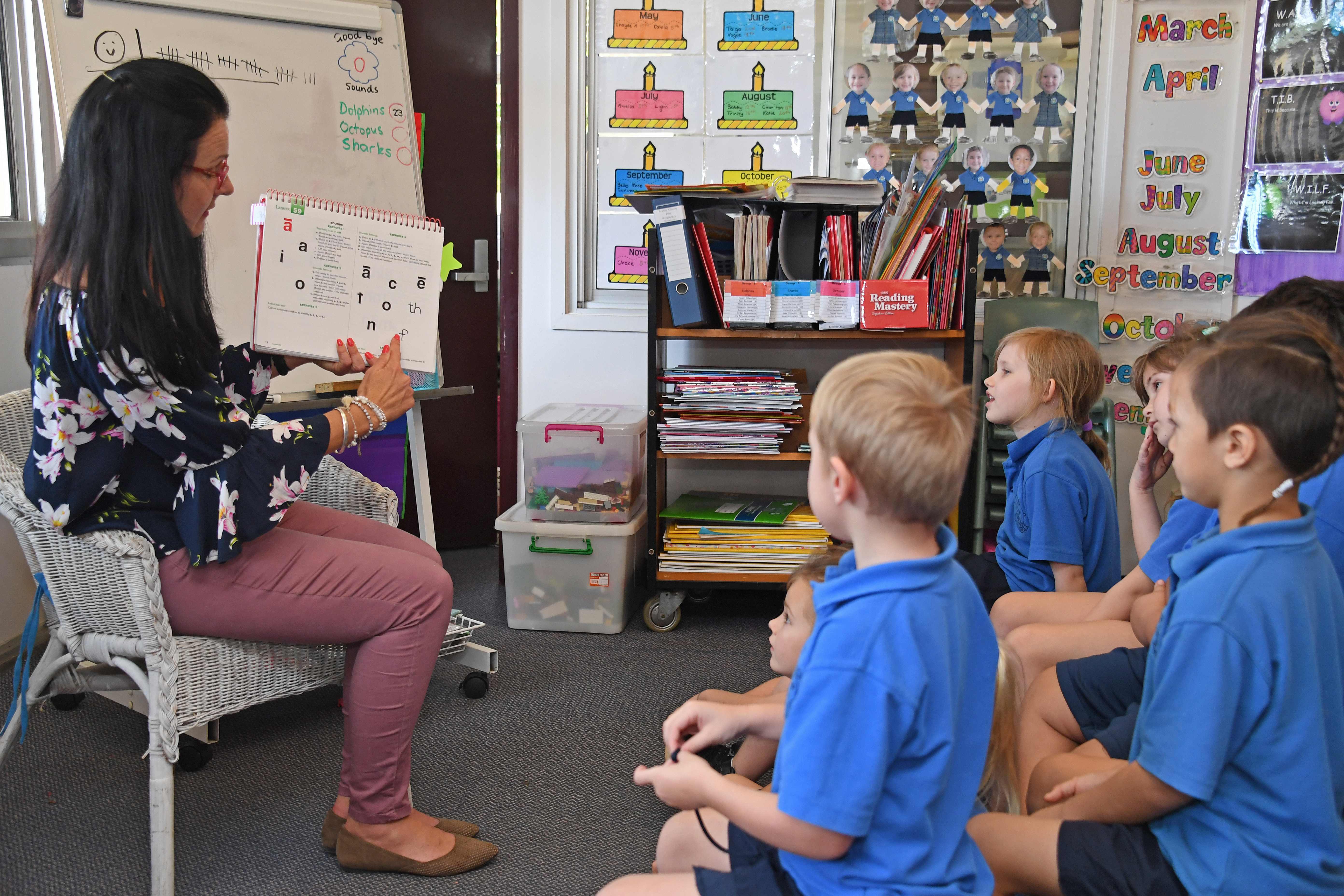Introduction
For teachers, professional development is not something which is confined to the lecture halls and libraries of their alma maters. Once a teacher receives their qualification, they will want to improve the quality of the service they provide in order to stay up to date with the learning evidence, technological advancements, societal shifts, and student needs. The role of professional development is therefore to equip teachers to navigate these complexities.
This article delves into the teacher professional development journey: from the nurturing of novice teachers to the more refined growth of experienced teachers, we will explore the important considerations in selecting the right courses while contextualising the information for educators in Australia.
Current landscape of professional development in Australia
The landscape of professional development for teachers in Australia is significantly shaped by the frameworks established by the Australian Institute for Teaching and School Leadership (AITSL). AITSL sets forth a comprehensive suite of standards and resources designed to support the continuous improvement and development of teaching professionals so that they are well-equipped to meet the diverse needs of their students and adapt to the evolving educational landscape.
Central to AITSL’s approach to professional development is the articulation of seven standards for teaching, which are further organised across four distinct career stages. These stages—Graduate, Proficient, Highly Accomplished, and Lead—provide a clear pathway for teachers to progress through their careers, from novice teachers to expert practitioners and educational leaders. The curriculum is also grouped into three key domains of teaching: Professional Knowledge, Professional Practice, and Professional Engagement. This structure embraces a holistic approach to teacher professional development, encouraging teachers to not only enhance their instructional skills in the classroom, but to also engage with their community of practice and to contribute to the profession more broadly.
Good to Great Schools Australia has a professional development platform for teachers and school leaders called the Mastery Teaching Pathway. It is fully aligned with AITSL’s standards. Aligning professional development courses and materials to a common standard offers numerous benefits. It establishes a unified direction for teacher growth, ensuring that development efforts are coherent and targeted towards goals of educational excellence which are universally recognised. In addition, it creates a shared understanding of what constitutes effective teaching across different stages of an educator’s career, creating a structured and focused approach to professional growth. As a result, all teachers have access to consistent, high-quality resources that support their lifelong education, regardless of their career stage.
Professional development for novice teachers (1–5 years of experience)
For teachers in the initial stages of their careers, the first several years are spent bridging the gap between the theoretical knowledge acquired during their higher education degree and its practical application in the classroom and other school environments. This period is marked by gaining experience from real-world situations encountered with students and colleagues, and learning effective teaching and management strategies which allow them to feel confident in dealing with a wide range of scenarios, much of which are unpredictable and can arise spontaneously.
Classroom management is a crucial skill for novice teachers, as it involves developing a range of communication and organisational techniques to create a learning environment that promotes positive student outcomes. This is particularly challenging with younger students, where maintaining discipline and engagement are essential. To achieve this, teachers must learn to balance adhering to educational goals while tailoring the content to meet diverse learner needs by crafting lessons that not only cover the curriculum content but also make the material accessible and appealing to students with a broad range of abilities. Such strategies lay the groundwork for fostering a culture of mutual respect and cooperative learning among students over the long term, which facilitate the process of effective classroom management.
To navigate these challenges, novice teachers benefit markedly from targeted support. Mentoring by seasoned educators can offer invaluable insights, while professional development programs tailored to these specific needs can enhance their teaching repertoire, aiding in the smooth transition from novices to confident practitioners.
Professional development for experienced teachers (6–10 years of experience)
As teachers progress and enter the middle and later stages of their career, their developmental needs shift towards deepening their expertise while refreshing parts of their practice to keep pace with the inevitable changes that the educational profession and its practices undergo.
Integrating technology into the professional development path for more seasoned teachers enables them to leverage digital tools which were not available in their earlier training, and which help them connect with students through platforms that they are already familiar with, thus enriching their learning experience. Leadership and mentorship become areas where more experienced teachers can shine, offering the wisdom they have gained (and the lessons they have learned) as guidance to their greener colleagues. These teachers’ deep understanding of and specialisation in certain instructional techniques or subject areas allows them to carve out niches of expertise, contributing to the educational ecosystem by addressing specific student needs or even advancing curriculum development.
In contrast with their novice counterparts, experienced teachers look for professional development opportunities that allow for greater autonomy and self-directed exploration. They thrive on the freedom to pursue advanced workshops, conferences, or research in areas that pique their interest and to feed this back into the shared pool of knowledge and experience of their fellow educators.
Choosing the right professional development courses for teachers
When embarking on the journey of professional development, educators are faced with a plethora of course options. Selecting the right course demands careful consideration, ensuring alignment with both more general professional standards and the specific context and needs of their school or institution. Furthermore, a course that resonates with an educator’s career trajectory and personal growth goals can significantly amplify its impact, fostering a deeper sense of fulfilment and motivation to apply new learning.
Relevance to the current educational context
The relevance of a professional development course to an educator’s current teaching context and the specific needs of their students cannot be overstated. Teachers should seek out courses that also offer strategies and insights directly applicable to their classroom challenges, whether it be managing learning environments with larger class sizes or tailoring instruction to meet varied individual student needs, such as those of special education students or students with English as a second language (ESL). This ensures that the time and effort invested in teacher professional developmenttranslates into tangible benefits for the students that are being taught.
Highly trusted, widely recognised providers
Accreditation and recognition by professional bodies or educational authorities are indicators of the quality and relevance of a professional development course for teachers. This acknowledgment signifies that the course has undergone rigorous evaluation and meets the high standards required by these organisations. As far as educators are concerned, they should select a program that has been vetted for its educational value, ensuring that the knowledge and skills acquired are recognized within the professional community. The added benefit of this is that the qualifications from trusted providers are easily transferable across different educational systems and regions, thereby improving a teacher’s career mobility and progression.
Evidence-based approaches
The cornerstone of any teacher professional development initiative should be its commitment to evidence-based practices. Educators are therefore strongly encouraged to select programs that are not just theoretically sound but also backed by empirical research. Studies should demonstrate the effectiveness of these approaches in real classroom settings resulting in tangible improvements in teacher performance and student learning outcomes. By prioritising programs that are both accredited and rooted in solid research, educators make a strategic investment in their employees’ development, one that promises to elevate their teaching efficacy and enrich their students’ learning experiences in a sustainable way.
When embarking on the journey of professional development, educators are faced with a plethora of course options. Selecting the right course demands careful consideration, ensuring alignment with both more general professional standards and the specific context and needs of their school or institution. Furthermore, a course that resonates with an educator’s career trajectory and personal growth goals can significantly amplify its impact, fostering a deeper sense of fulfilment and motivation to apply new learning.
Relevance to the current educational context
The relevance of a professional development course to an educator’s current teaching context and the specific needs of their students cannot be overstated. Teachers should seek out courses that also offer strategies and insights directly applicable to their classroom challenges, whether it be managing learning environments with larger class sizes or tailoring instruction to meet varied individual student needs, such as those of special education students or students with English as a second language (ESL). This ensures that the time and effort invested in teacher professional developmenttranslates into tangible benefits for the students that are being taught.
Highly trusted, widely recognised providers
Accreditation and recognition by professional bodies or educational authorities are indicators of the quality and relevance of a professional development course for teachers. This acknowledgment signifies that the course has undergone rigorous evaluation and meets the high standards required by these organisations. As far as educators are concerned, they should select a program that has been vetted for its educational value, ensuring that the knowledge and skills acquired are recognized within the professional community. The added benefit of this is that the qualifications from trusted providers are easily transferable across different educational systems and regions, thereby improving a teacher’s career mobility and progression.
Evidence-based approaches
The cornerstone of any teacher professional development initiative should be its commitment to evidence-based practices. Educators are therefore strongly encouraged to select programs that are not just theoretically sound but also backed by empirical research. Studies should demonstrate the effectiveness of these approaches in real classroom settings resulting in tangible improvements in teacher performance and student learning outcomes. By prioritising programs that are both accredited and rooted in solid research, educators make a strategic investment in their employees’ development, one that promises to elevate their teaching efficacy and enrich their students’ learning experiences in a sustainable way.
Professional development for teachers: Next steps
Professional development is a continuous learning curve, with each stage bringing fresh opportunities for growth: from the initial stages of grappling with the practicalities of classroom management and curriculum delivery, to the more advanced pursuit of leadership and specialised expertise. The frameworks and standards set by AITSL, alongside a variety of professional development courses such as the GGSA Mastery Teaching Pathway, offer a structured methodological approach which honours the progression from novice to master. It is completely free to get started and to complete the mastery teaching pathway – improving your teaching skills and strenghtening your credentials along the way.



